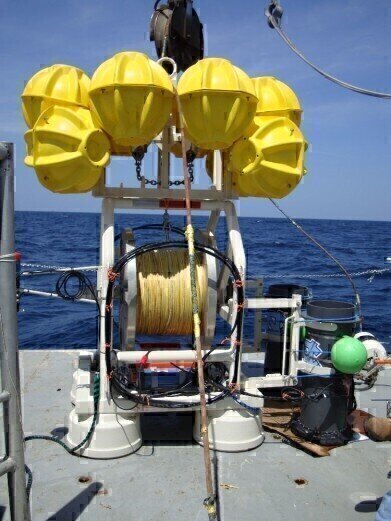Water/wastewater
ITT Analytics’ AADI and the University of North Carolina Partner to Monitor Oil and Gas Releases in the Gulf of Mexico
Jul 25 2011
ITT Corporation (USA) announceS that its AADI brand has teamed up with the University of North Carolina (UNC) at Chapel Hill to develop two new multi-sensor arrays to detect light hydrocarbons and oxygen depletion associated with oil and gas releases such as recent occurrences in the northern Gulf of Mexico. This research is vital to monitor the long-term effects of water contamination and its threat to coral reef and other coastal ecosystems. The multi-sensor arrays, built on AADI’s SEAGUARD® platform, have enabled scientists in the University’s Department of Marine Sciences to set new standards for the efficiency of analyses while offering unmatched precision and simple deployment.
The AADI SEAGUARD platform from ITT Analytics is a multi-parameter instrument offering advanced flexibility and real-time capabilities for underwater observation. The first of the new arrays developed from the platform, nicknamed HANDI by the UNC-Chapel Hill scientists, was deployed for testing in 2010 at Conch Reef off Key Largo, Florida. The array assisted the team by effectively detecting oxygen depletion and potential oil and gas transport along the reef ecosystem’s border with fast-moving water in the Florida Straits. Equipped with two of AADI’s fast-response optodes from ITT Analytics, HANDI offers the team immediate and reliable dissolved oxygen measurements without the need for repeated calibrations.
Following the success of the system in Florida, HANDI has been redeployed as part of a benthic lander system with oxygen and light hydrocarbon monitoring capabilities in the northern Gulf of Mexico. The deployment forms part of a long-term gas hydrate monitoring program at Mississippi Canyon Block 118 located within 20 miles of the Deepwater Horizon oil and gas blow-out. The SEAGUARD platform also offers UNC-Chapel Hill scientists the possibility to add a multi-sensor string, which can turn a single system into a large-scale array simply by plugging in a string of up to 60 sensors.
In addition to deploying these two new SEAGUARD platforms, UNC-Chapel Hill marine scientists also collected continuous oxygen and temperature data on a living coral reef in the Florida Keys using a SEAGUARD string system. The system features major design breakthroughs that allow direct, simultaneous monitoring and logging of ambient dissolved oxygen and benthic respiration. Equipped with a 170 meter long string and ten of AADI’s 4330F fast response optode sensors, the system collects data every 30 seconds and sends it via radio to on-shore laboratories in near real time, allowing continuous live observations on the seafloor.
Digital Edition
AET 29.2 May 2025
May 2025
Water / Wastewater- From Effluent to Excellence: Microbiological assessment of a containerized modular water reuse pilot system- Without water everything comes to a haltAir Monitoring- Probe Sampli...
View all digital editions
Events
Jun 11 2025 Copenhagen, Denmark
Jun 17 2025 Guangzhou, China
Singapore International Water Week Spotlight 2025
Jun 23 2025 Singapore
Jun 24 2025 Santa Clara, CA, USA
Jun 25 2025 Sao Paulo, Brasil

_1000x1500.jpg)


.jpg)






.jpg)







